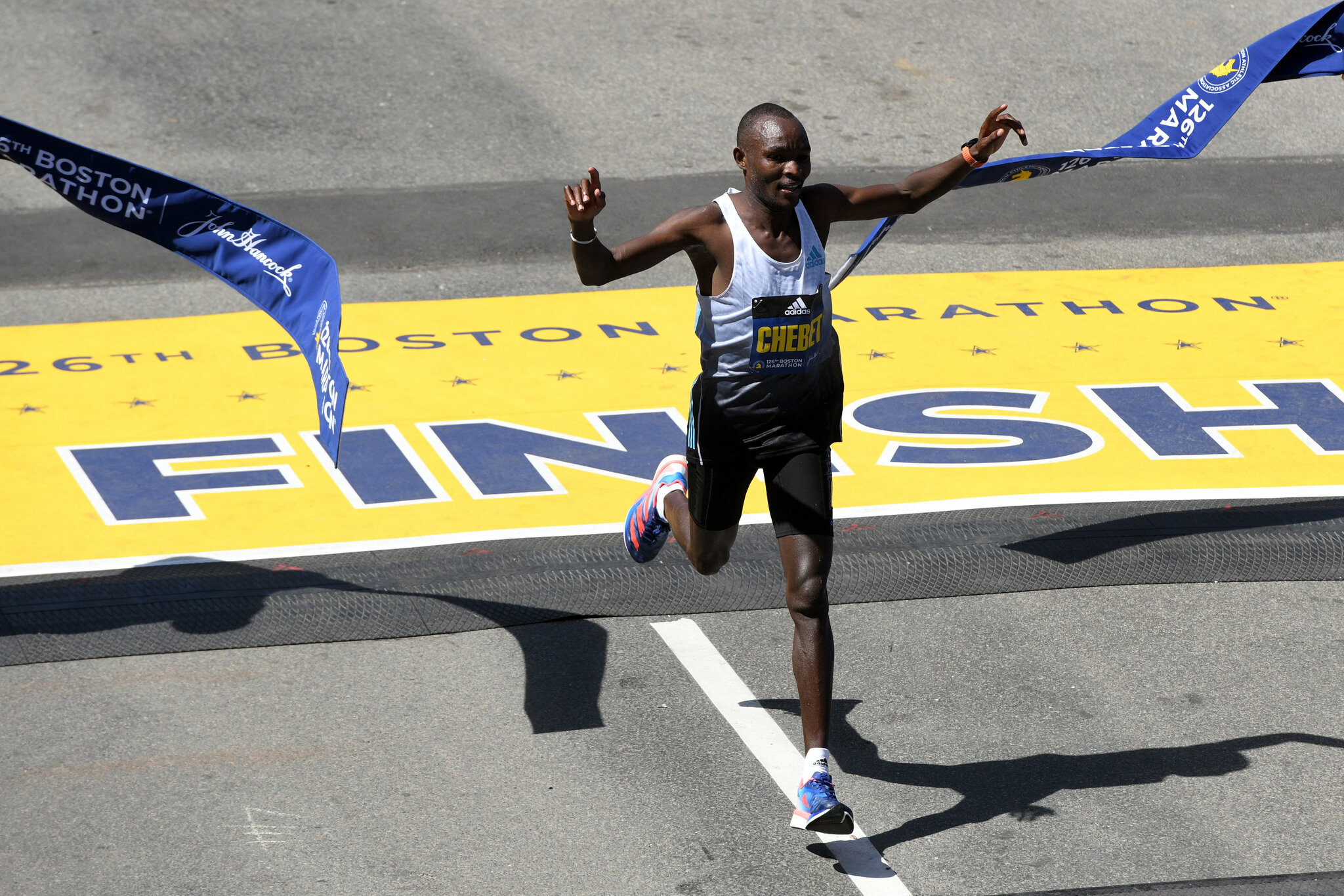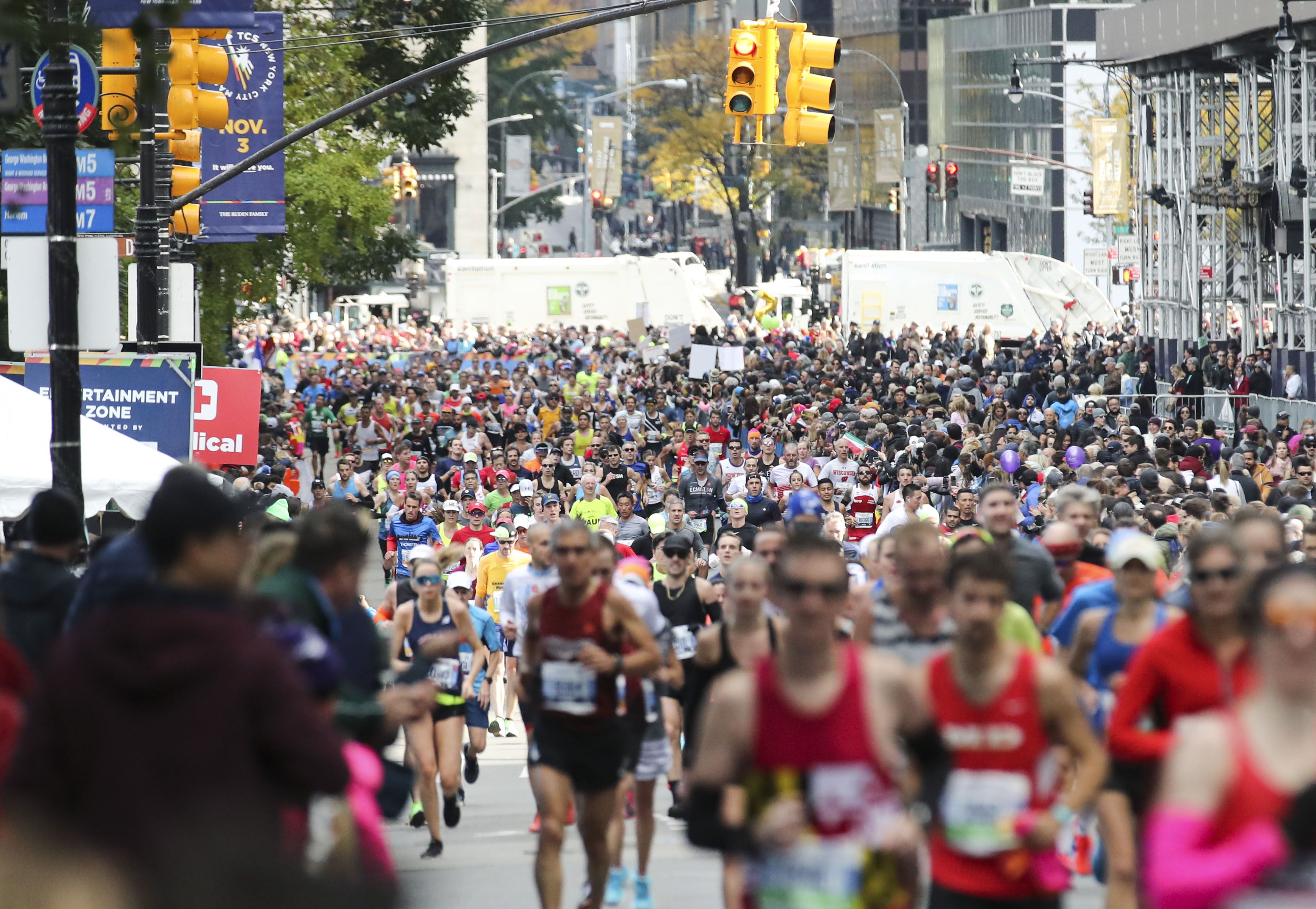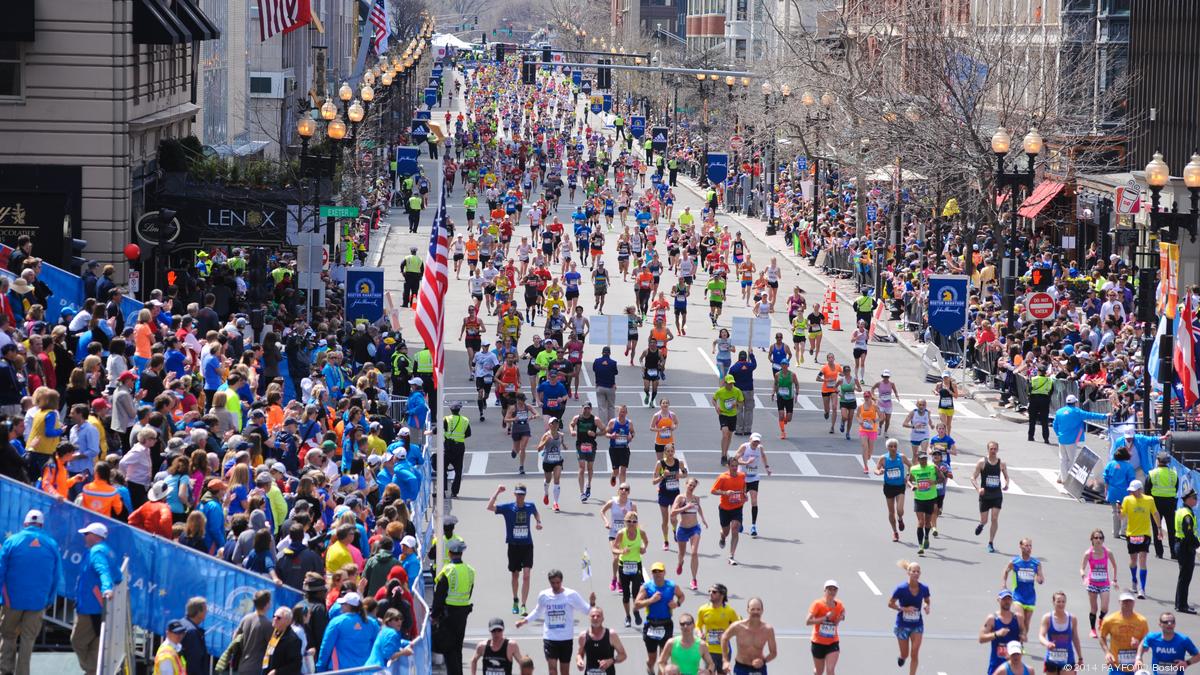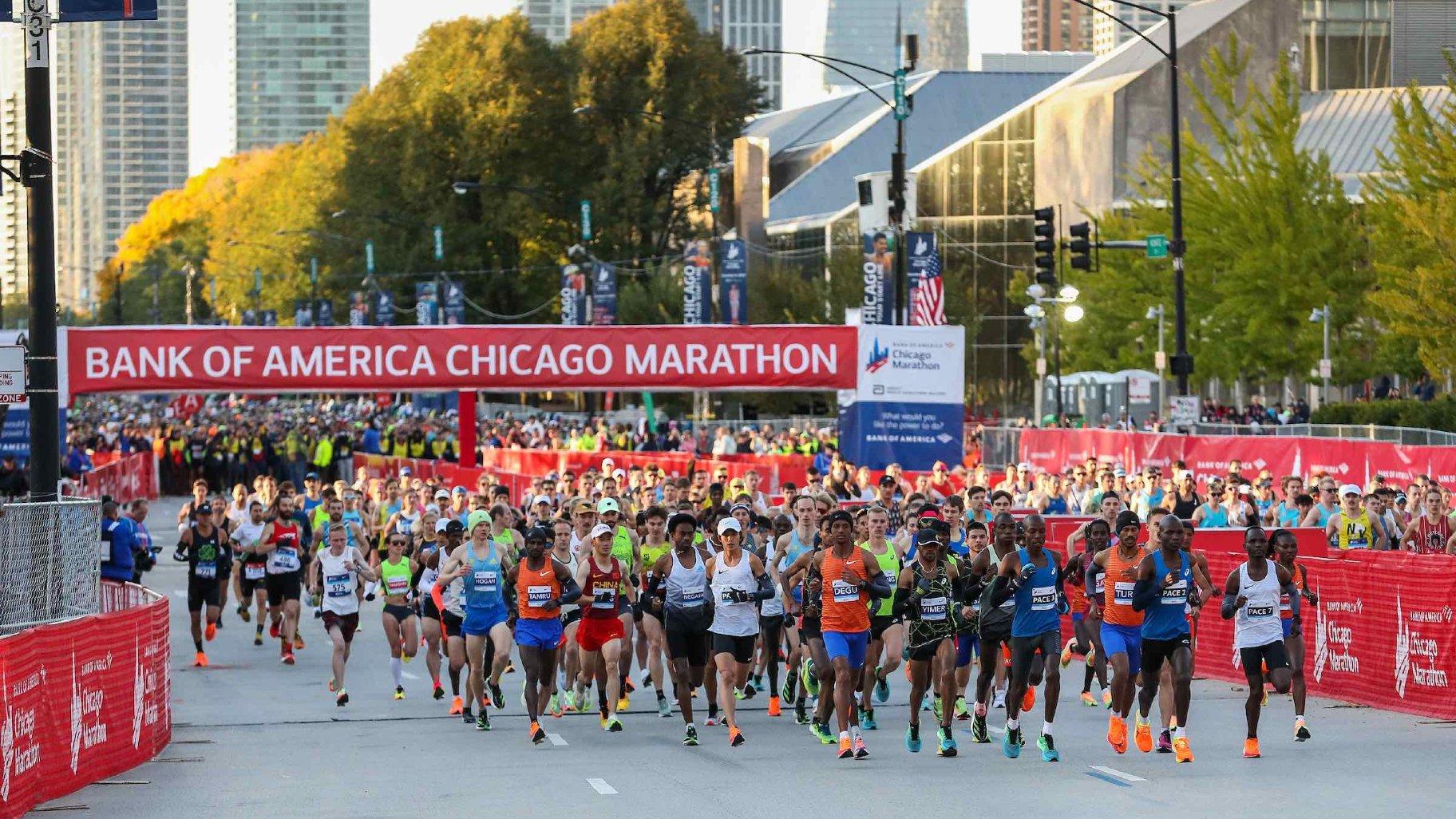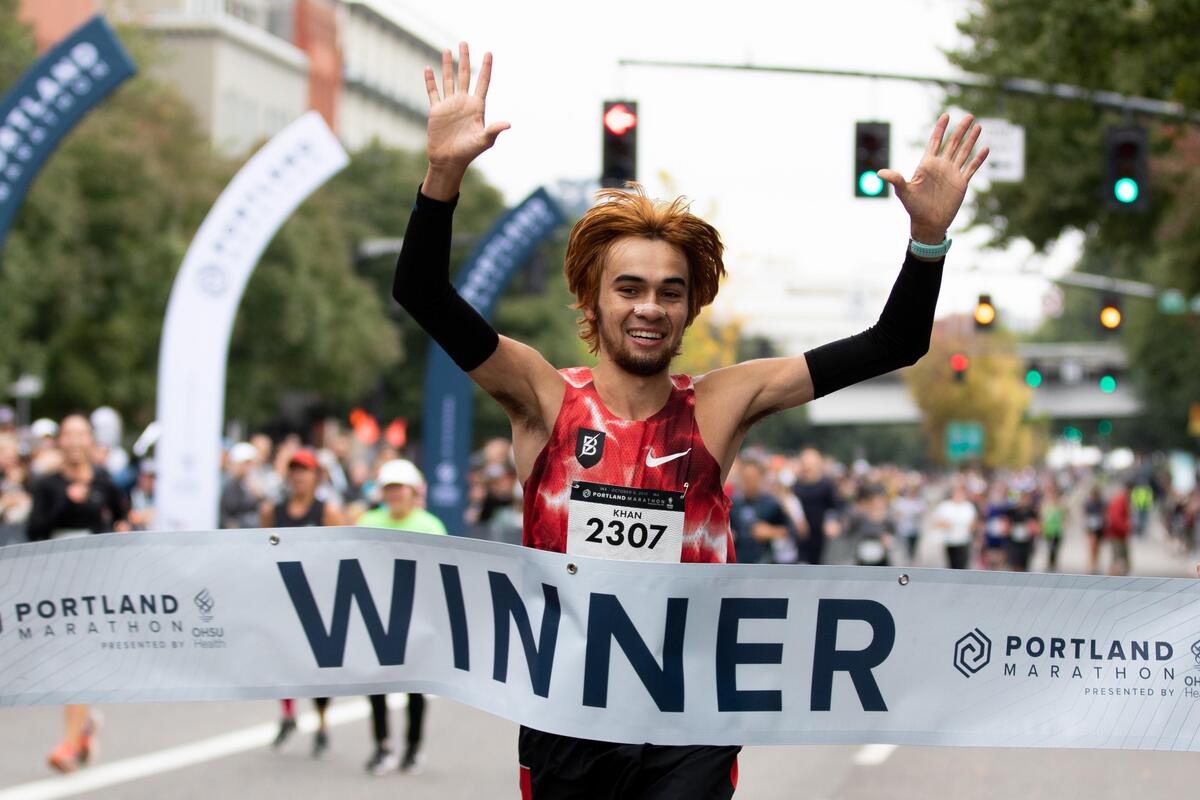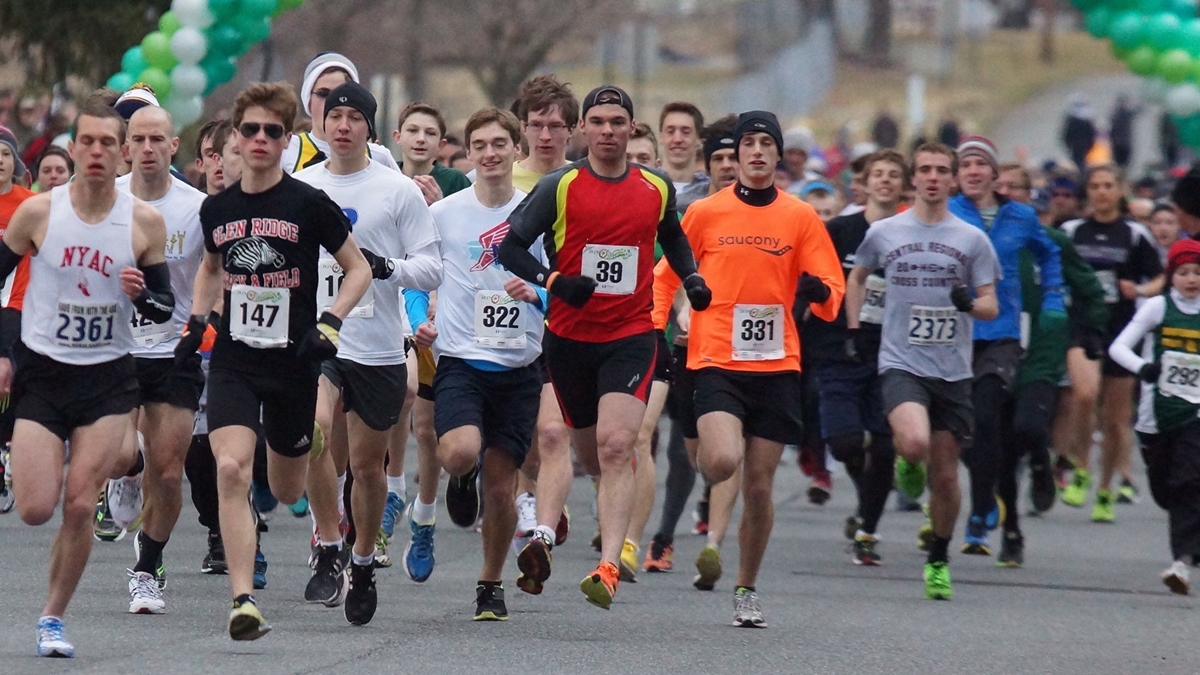

Featured
What Time Is The Marathon Over Today
Modified: August 19, 2023
Discover what time the featured marathon event will be over today. Stay updated and make sure you don't miss the thrilling finish!
Introduction
Welcome to the exciting world of marathons! Whether you’re a seasoned runner, a casual jogger, or a passionate spectator, marathons offer a unique blend of athleticism, determination, and community spirit. In this article, we will provide you with a comprehensive overview of marathons, covering everything from the exhilarating start to the triumphant finish. So, lace up your shoes and get ready for an adrenaline-filled adventure!
Marathons have a rich history that dates back to ancient times. Inspired by the legendary Greek soldier Pheidippides, who ran from the battlefield of Marathon to Athens to announce the victory, marathons have become the ultimate test of endurance and perseverance.
Modern marathons are organized events that attract thousands of runners from around the world. These events celebrate the human spirit and showcase the remarkable feat of running 26.2 miles (42.2 kilometers). From elite athletes pushing their limits to amateurs challenging themselves, marathons offer a platform for individuals to conquer personal goals and inspire others.
Marathons are not just limited to runners. They also serve as an opportunity for communities to come together and support the participants. Family, friends, and even strangers line the streets, cheering and providing much-needed motivation. Spectators play a crucial role in creating a festive atmosphere and spurring on weary runners towards the finish line.
Throughout this article, we will delve into the intricate details of marathons, covering essential information such as start times, course details, tracking methods, and more. Whether you’re a participant looking for crucial race day information or a spectator eager to support your loved ones, this guide will equip you with all the knowledge you need to make the most of any marathon experience.
Overview of the Marathon
The marathon is more than just a race. It is a symbol of human endurance, determination, and triumph. This iconic event puts participants to the ultimate test as they push their bodies and minds to cover a grueling distance of 26.2 miles (42.2 kilometers).
Marathons are typically held as organized events, attracting runners of all abilities – from professional athletes to recreational enthusiasts. The race draws a diverse crowd of individuals who share a common goal: to cross the finish line and achieve personal greatness.
The atmosphere at marathons is electric, filled with anticipation and excitement. Runners gather days before the event, attending expos and pre-race activities, immersing themselves in the spirit of the race. It’s a chance for participants to meet fellow runners, collect their race packets, and soak up the energy that fills the air.
Preparation for a marathon requires months of training and discipline. Runners follow rigorous training plans, gradually increasing their mileage to build both endurance and strength. They focus on nutrition, rest, and injury prevention to ensure they are physically and mentally prepared to tackle the distance.
On race day, participants arrive at the starting line with a mix of nerves and anticipation. The buzz of excitement intensifies as they line up with other runners, waiting for the starting gun to go off. The adrenaline rush kicks in as they begin their journey through the course, with spectators lining the streets, cheering on the runners every step of the way.
One of the most remarkable aspects of marathons is the sense of camaraderie among the participants. Strangers become friends as they encourage and support each other throughout the race. The shared experience of pushing through pain and exhaustion creates a bond that transcends individual achievements.
As the marathon progresses, runners face a range of physical and mental challenges. They must conquer fatigue, self-doubt, and the temptation to give up. It is in these moments of struggle that the true spirit of the marathon shines through. Runners dig deep, drawing strength from the cheers of onlookers, the support of fellow participants, and their own determination to reach the finish line.
The finish line is the culmination of months of hard work and dedication. It is a moment of pure joy and accomplishment as runners cross over, their faces beaming with pride and relief. Spectators erupt in cheers, celebrating the triumph of each individual who completes the marathon.
Marathons offer a transformative experience for both runners and spectators alike. They embody the human spirit’s limitless potential, reminding us that with perseverance and determination, we can conquer great challenges. So, whether you’re a first-time participant or a passionate spectator, the marathon promises an unforgettable journey that will leave you inspired and in awe of the power of the human spirit.
Start Time and Location
One of the key aspects of a marathon is the start time and location. The start of the race sets the tone for the entire event and is a moment filled with excitement and anticipation for both runners and spectators.
The start time of a marathon can vary depending on the event and location. Many marathons opt for an early morning start to take advantage of cooler temperatures and minimize disruption to urban areas. It is important for participants to arrive well in advance to allow time for check-in, warm-up, and any last-minute preparations.
The exact location of the marathon’s starting line is typically strategically chosen to accommodate the number of participants and ensure a smooth race start. Common starting points include public parks, iconic landmarks, or dedicated race venues. These locations are often easily accessible by public transportation and offer ample space to accommodate the large crowds that gather on race day.
Race organizers take into consideration factors such as parking facilities, restroom availability, and crowd management when selecting the start location. They strive to create an environment that is conducive to a positive race experience for both runners and spectators.
Participants are usually provided with specific information about the start location in their registration materials or race packet. This includes details on parking options, public transportation access, and any additional instructions or requirements. It is crucial for runners to familiarize themselves with this information in advance to ensure a smooth arrival on race day.
On the morning of the marathon, runners gather at the designated starting area, often joining corrals or waves based on their predicted finish times. This organization ensures a safe and efficient start, as participants are released in groups to prevent overcrowding and reduce the chances of accidents.
The atmosphere at the start line is electric. Runners exchange smiles, words of encouragement, and nervous jitters as they await the official countdown. The air is filled with anticipation and excitement, a palpable energy that fuels the beginning of the race.
As the starting horn sounds, the crowd erupts in cheers, and runners embark on their marathon journey. The first steps across the starting line mark the beginning of a personal quest towards achieving their race-day goals.
Start times and locations are carefully planned to ensure a smooth and memorable experience for all involved. Whether you’re a participant ready to tackle the challenge or a spectator cheering on loved ones, the start of the marathon sets the stage for an extraordinary event filled with determination, camaraderie, and an unwavering spirit of endurance.
Course Details
The course of a marathon is a vital aspect of the race, offering a unique blend of challenge, diversity, and scenic beauty. From urban streets to picturesque trails, marathons take participants on a journey filled with varying terrains and landscapes.
The course for a marathon is carefully selected to showcase the host city’s iconic landmarks, beautiful scenery, and vibrant neighborhoods. It is designed to provide a memorable experience for both runners and spectators.
Marathons can have different types of courses, each with its own characteristics. Some marathons follow a point-to-point course, where runners start at one location and finish at another. This type of course often offers stunning vistas, as participants navigate through cities, parks, or even along coastlines.
Other marathons feature a loop course, where runners start and finish at the same location, covering the distance by completing multiple laps. Loop courses are favored for their convenience, as participants can easily access aid stations and spectators can cheer them on at various points along the route.
The elevation profile of a marathon course is another crucial factor to consider. Some courses are known for their flat terrain, providing an opportunity for runners to chase personal records. Other courses feature rolling hills or challenging inclines, testing the endurance and strength of the participants.
Course maps and elevation charts are typically provided to runners in advance, allowing them to strategize their race and mentally prepare for any challenging sections. Familiarizing oneself with the course helps participants pace themselves, conserve energy, and make informed decisions during the race.
A well-marked course is essential for participants to navigate their way from start to finish successfully. Race organizers place clear signage, mile markers, and directional arrows along the route to guide runners and prevent any confusion. Volunteers and race officials are also stationed at key points to provide further assistance and ensure participants stay on the designated course.
Safety is a top priority in marathon courses. Traffic control measures are put in place to ensure the safety of both runners and spectators. Local law enforcement agencies work closely with race organizers to implement road closures, rerouting of traffic, and managing intersections. This collaborative effort creates a secure environment for participants to focus on their race without worrying about vehicular traffic.
Course amenities, such as aid stations and restrooms, are strategically placed along the route to provide runners with necessary support. Aid stations offer hydration and nutrition options to keep participants fueled and hydrated throughout the race, while restrooms allow for necessary breaks.
The course of a marathon is an integral part of the race experience, offering a mix of physical challenges and breathtaking sights. As participants navigate through the course, they are propelled forward by the cheers of spectators, the support of fellow runners, and their own unwavering determination to cross the finish line. The course serves as a stage for personal triumphs, bonding moments, and unforgettable memories.
Tracking and Timing
Tracking and timing play a crucial role in marathons, providing participants with valuable information about their performance and allowing friends, family, and spectators to follow their progress throughout the race.
In today’s digital age, marathons utilize advanced tracking technology to monitor the movement of runners. Tracking systems can include various methods, such as GPS trackers, timing mats, and RFID (Radio Frequency Identification) chips. These technologies accurately record a runner’s time and position at various points along the course.
Timing mats placed strategically at the start line, finish line, and intermediate points allow for accurate time tracking. As runners cross each timing point, their individual times are recorded and transmitted to a central system. This enables participants to monitor their progress, pace, and projected finish time in real-time.
Tracking systems also provide a convenient way for friends, family, and supporters to stay connected with their loved ones during the race. Many marathons offer race-specific mobile apps or websites that allow spectators to enter a runner’s bib number and receive updates on their progress. These updates can include live tracking, split times, and even predicted arrival times at certain locations.
Additionally, marathon organizers often provide live tracking and timing information on their official websites or social media platforms. This allows supporters from around the world to follow the race and cheer on their favorite runners, even if they cannot be physically present at the event.
For those participating in a marathon, accurate timing is important not only for personal satisfaction but also for setting goals and measuring progress. With the ability to track their time at specific mile markers or intervals, runners can adjust their pace, make strategic decisions, or gauge their overall performance.
Timing and tracking technology also play a significant role in determining the overall winners and age category winners of the marathon. By accurately recording times, race officials can identify the fastest runners and award them accordingly. This information is often used to publish race results and may be utilized to qualify for other prestigious races.
It is worth noting that while tracking and timing systems are highly reliable, various factors can influence the accuracy of recorded times. External factors such as course conditions, weather conditions, and individual runner behavior can slightly alter the recorded times. However, organizers take great care to ensure the accuracy and fairness of the overall results.
Overall, tracking and timing systems enhance the marathon experience for both participants and spectators. They provide real-time updates, enable precise measurement of performance, and contribute to the overall excitement and engagement of the event. Whether you’re a participant striving for a personal best or a supporter cheering on the sidelines, tracking and timing technology adds an extra layer of information and excitement to the marathon journey.
Aid Stations and Restrooms
Aid stations and restrooms are essential elements of a marathon, providing participants with the necessary support and facilities to stay fueled and comfortable throughout the race.
Aid stations are strategically placed along the marathon route to offer runners hydration, nutrition, and sometimes medical assistance. Typically staffed by volunteers, these stations provide a lifeline for runners, particularly in longer races where proper nutrition and hydration are crucial to maintaining energy levels.
At aid stations, participants will find water and sports drinks to quench their thirst and replenish electrolytes. They may also offer energy gels, fruits, or other snacks to provide the necessary fuel for endurance. This helps runners maintain their energy levels and avoid dehydration or fatigue.
Medical personnel are often present at aid stations to address any race-related injuries or medical concerns. They provide on-the-spot treatment for minor ailments or offer guidance and support for more serious issues. Having medical assistance readily available ensures the safety and well-being of the runners throughout the race.
Restrooms are another crucial element for marathon runners. They offer participants a much-needed break during the race, allowing them to relieve themselves and maintain comfort throughout the grueling miles.
Organizers aim to provide an adequate number of restrooms at regular intervals along the course. These portable toilets are strategically placed at aid stations, popular spectator areas, or other suitable locations. It is important for runners to be aware of the restroom locations in advance to plan their breaks and maximize their time on the course.
Efficient management of aid stations and restrooms is crucial for the smooth functioning of a marathon. Volunteers and race staff work tirelessly to ensure that aid stations are well-stocked and organized, minimizing waiting times and providing a positive experience for the runners.
Given the large number of participants in marathons, it is important that runners follow proper etiquette at aid stations and restrooms. This includes disposing of cups and trash in designated areas, allowing others to access the facilities, and being considerate of fellow runners and volunteers.
For spectators, aid stations serve as gathering points to cheer on their loved ones. Family and friends can provide their support, offering encouraging words and refreshments if allowed by race regulations. Spectators can also play a role in helping runners locate aid stations or restrooms along the course.
Ultimately, aid stations and restrooms are vital elements of the marathon infrastructure, ensuring the well-being and comfort of the participants. The availability of hydration, nutrition, and appropriate facilities plays a significant role in enabling runners to perform at their best and enjoy a positive race experience.
Spectator Information
Spectators play an integral role in marathons, providing encouragement, support, and a vibrant atmosphere for participants. Whether you’re a family member, friend, or a passionate supporter, being well-informed about the race and how to navigate the event as a spectator can enhance your experience and ensure that you don’t miss any of the action.
One of the first things to consider as a spectator is understanding the race route. Familiarize yourself with the course map, which is typically available on the marathon’s official website or in race materials. This will give you an idea of where runners will be passing through and where the best spots for spectating might be.
Arriving early is key, as it allows you to secure a good viewing spot along the course. You can plan to be at certain landmarks, intersections, or spectator-friendly areas. Arriving early also helps you avoid any road closures or traffic congestion that may occur due to the marathon.
Bringing supportive signs, noisemakers, or cowbells can create a fun and energetic atmosphere for both runners and other spectators. The sound of cheers and encouragement can make a significant difference to participants, boosting their morale and giving them the extra push they need to keep going.
It’s important to be mindful of the runners’ needs while spectating. Avoid obstructing the course or impeding the runners’ progress. Stay on the designated spectator areas and follow the instructions of race officials or volunteers to ensure everyone’s safety and enjoyment.
Another helpful tip is to be prepared for all types of weather conditions. Dress appropriately and bring sunscreen, hats, umbrellas, or rain gear, depending on the forecast. Being comfortable and protected from the elements will help ensure an enjoyable viewing experience.
If you’re spectating with children, consider keeping them engaged and entertained throughout the event. Bring snacks, toys, or activities to keep them occupied, but also remind them of race etiquette, such as not stepping onto the course or interfering with the runners.
For those who are unable to attend in person, many marathons offer live streaming options on their official websites or through various social media platforms. This allows you to follow the race from the comfort of your own home and still be a part of the excitement.
Finally, don’t forget to join in the celebration at the finish line. Plan to be there early to witness the culmination of the marathon, as runners cross the finish line with a mix of exhaustion and elation. Applaud their achievements, and be sure to capture those memorable moments both for your own enjoyment and to share with the runners.
Spectating at a marathon is an incredible experience. By being informed, considerate, and enthusiastic, you can contribute to the festive and supportive environment that makes marathons truly special. Whether you’re cheering on a specific runner or simply enjoying the energy of the event, your presence as a spectator is sure to make a lasting impact on those participating in the marathon.
Road Closures and Traffic
Marathons are exciting events that bring together participants and spectators alike. However, it’s important for both runners and those planning to commute or navigate the race route to be aware of potential road closures and traffic disruptions that may occur.
Marathons require significant coordination with local authorities and transportation agencies to ensure the safety of participants and manage traffic effectively. As a result, it is common for certain roads along the marathon route to be closed or partially closed for the duration of the race.
Prior to race day, organizers typically communicate road closure information through various channels, including their website, social media, and signage. It is essential for residents, businesses, and commuters to be aware of these closures to plan alternate routes and avoid unnecessary delays.
Local law enforcement agencies and volunteers are often stationed along the marathon route to assist with traffic management and provide guidance to drivers. Their role is to help maintain a smooth flow of traffic and minimize disruption as much as possible.
If you have to travel during the marathon, it is advisable to check the race website or contact the local authorities for up-to-date information on road closures and the best way to navigate around the impacted areas. They can provide alternative routes or suggest the most convenient times to travel.
Public transportation services may also be affected by the marathon. Bus routes may be temporarily altered or delayed, and train services might experience increased demand. It is wise to check with the local transportation authority for any changes to public transit schedules to plan your journey accordingly.
It’s important to note that road closures and traffic disruptions during a marathon are temporary, and organizers strive to minimize inconvenience to the community and commuters as much as possible. The closures are designed to prioritize participant safety and ensure an enjoyable race experience.
For residents and businesses along the marathon route, additional measures may be in place to facilitate access and minimize disruption. Organizers often work closely with local stakeholders to develop a plan that addresses any specific concerns and provides necessary accommodations.
As a spectator, being aware of road closures and traffic patterns is also important. Plan your route to the best viewing spots, considering the potential impact of road closures and heavy traffic. Arriving early and allowing extra time for travel will help ensure a stress-free and enjoyable experience as you navigate the race route.
Despite the temporary inconvenience, marathons bring a sense of excitement and camaraderie to the community. They showcase the accomplishments of the runners and foster a shared spirit of achievement and support. By understanding and adapting to the road closures and traffic adjustments, everyone can contribute to the overall success and positive atmosphere of the marathon.
Finish Line and Celebrations
The finish line of a marathon is a place of triumph and celebration. It marks the culmination of months of training, sheer determination, and unwavering commitment. Here, runners experience an array of emotions – exhaustion, joy, and an overwhelming sense of accomplishment.
At the finish line, runners are greeted with cheers from spectators, the sound of applause filling the air. Volunteers and race officials guide them towards the recovery area, where they can catch their breath, rehydrate, and collect their finisher medals or other tokens of achievement.
Spectators play a crucial role at the finish line, as their support and encouragement fuel the runners’ final push. The thunderous applause, cheers, and words of encouragement motivate participants to give their last ounce of energy and cross the finish line with resilience and pride.
As runners cross the finish line, their exhaustion transforms into exhilaration. They raise their arms triumphantly, smiles radiating on their faces. The sense of accomplishment and fulfillment is palpable, not only for the individual runner but also for onlookers who have joined them on their journey.
The finish line is a place of celebration, where friends, family, and fellow participants reunite. Tears of joy, hugs of congratulations, and shared stories fill the air as runners embrace their loved ones and recount their race experience. It is a powerful moment of connection and camaraderie.
Post-race celebrations are often organized at or near the finish line, offering a festive atmosphere for runners and spectators alike. This can include music, food vendors, entertainment, and a sense of community as everyone comes together to honor the achievements of the participants.
Recovery and medical areas are also set up near the finish line to attend to runners’ immediate needs. Medical personnel provide assistance for post-race ailments, such as muscle cramps, dehydration, or minor injuries. Proper rest, hydration, and nutrition are essential as runners gradually recover and replenish their bodies.
Awards ceremonies are another highlight of the finish line celebrations. Winners in different categories, such as overall male and female, age groups, or wheelchair participants, are recognized for their exceptional performances. Applause and admiration fill the air as these remarkable individuals are acknowledged.
The finish line and the ensuing celebrations are a symbol of the human spirit’s resilience and the rewards of dedication and hard work. The memories created at the finish line of a marathon last a lifetime, serving as a testament to the runner’s personal achievement and the collective spirit of the event.
As a spectator, being present at the finish line is a remarkable experience. Applauding the runners, offering words of congratulations, and joining in the elated atmosphere contribute to the sense of unity and support that defines a marathon. Being part of the finish line celebrations allows us to share in the runners’ joy and become inspired by their remarkable achievements.
Past Winners and Records
Marathons have a rich history of remarkable performances and achievements. Each year, elite athletes from around the world gather to compete against one another, pushing the boundaries of human endurance and setting new records. The past winners and records of marathons serve as a testament to the incredible talent and determination of these individuals.
Every marathon has a prestigious list of past winners, individuals who have demonstrated exceptional skill and athleticism. These winners are not only victorious in their respective races but also serve as inspiration to future generations of runners.
Some marathons have become synonymous with legendary winners, those who have carved their names into the annals of marathon history. These individuals have not only won multiple times but have also shattered records and pushed the limits of what was once thought possible. Their mile-by-mile battles have captivated audiences and left a lasting mark on the marathon community.
Records set by these extraordinary athletes provide benchmarks for aspiring runners and fuel the competitive drive of those seeking to surpass them. These records are measured in various categories, including fastest times, course records, age group records, and records for wheelchair participants.
The fastest marathon times in history are a testament to the remarkable abilities of these athletes. Breaking the elusive two-hour mark was once seen as an insurmountable barrier, but in recent years, elite runners have come close to achieving this extraordinary feat. The record-breaking performances showcase the continuous advancements in training techniques, nutrition, and sports science.
Course records hold their own significance within marathons. These records represent the fastest time ever recorded on a specific course, showcasing the blending of runner skill and course characteristics. Course records often become focal points for future runners aiming to leave their mark on that particular race.
Age group records highlight the longevity and durability of marathon runners. These records are set by individuals within specific age categories, demonstrating that age is no barrier to achieving remarkable athletic feats. These records inspire and motivate older runners to continue pushing their limits.
Wheelchair participants have their own categories and records, showcasing the incredible strength and determination of para-athletes. Their times and achievements serve as a reminder of the inclusiveness and diversity within the sport of marathons.
Marathons celebrate and honor their past winners and record holders through dedicated recognition ceremonies and acknowledgement. Their names are etched into the history of the race, forever associated with its legacy and traditions.
As the sport of marathons continues to evolve, it is likely that new records will be set, barriers will be broken, and new legends will emerge. The past winners and records serve as a foundation for the ongoing pursuit of excellence and provide an ongoing source of inspiration for future generations of marathon runners.
Conclusion
Marathons are more than just races – they are incredible displays of human endurance, perseverance, and community spirit. From the exhilarating start to the triumphant finish, marathons create an atmosphere of excitement and accomplishment that captivates both participants and spectators.
In this comprehensive guide, we have explored the various elements that make marathons special. We started by delving into the rich history and significance of marathons, tracing their origins back to ancient times and highlighting their modern-day importance as a symbol of personal achievement.
We then explored key aspects such as the start time and location, course details, tracking and timing, aid stations and restrooms, spectator information, road closures and traffic management, finish line celebrations, and the past winners and records that define the marathon world.
Throughout this journey, we have witnessed the dedication and passion of both runners and spectators. We have appreciated the careful planning and coordination involved in organizing a marathon, from selecting the perfect start location to creating an engaging and challenging course.
We have also recognized the vital role played by spectators, who cheer on the runners, provide support, and contribute to the vibrant and festive atmosphere of the event. Their presence and encouragement help to create uplifting moments that stay with the runners long after the race is over.
Marathons are much more than just a test of physical endurance – they are a celebration of the human spirit. They bring people together, fostering a sense of camaraderie and inspiring individuals to push their limits, overcome challenges, and achieve greatness.
As we conclude this guide, we hope you have gained a deeper understanding of marathons and the incredible journey they offer, whether you are a participant lacing up your running shoes or a spectator ready to cheer on your loved ones.
Remember, marathons are about more than just crossing a finish line. They are about the personal growth, the resilience, and the unwavering determination that comes from pushing yourself beyond your limits. So, whether you’re a runner striving for a personal best or a spectator bringing your unwavering support, embrace the spirit of the marathon and let it inspire you to new heights.
